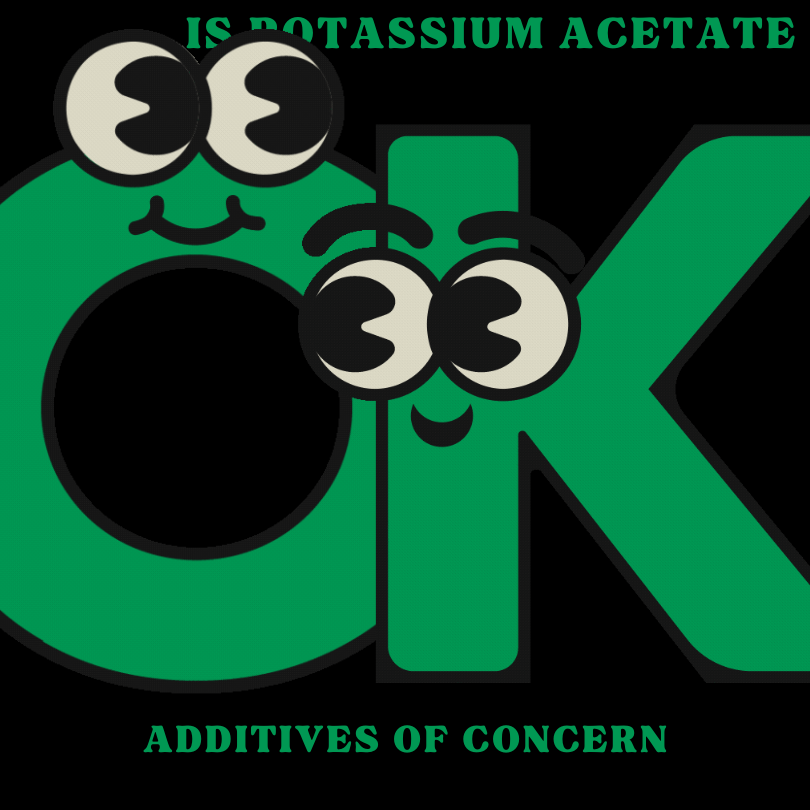For people who need to lower their potassium intake, reading labels for additives can help them avoid foods that are high in potassium. But with over 40 different potassium additives approved for us in Canada – knowing which ones are concerning and which ones aren’t can be hard.
Today’s post, focuses on potassium acetate. If you want to know more about other potassium additives. Check out my previous post here.
What is potassium acetate?
Potassium acetate is an approved food additive in both America and Canada. When I previously looked at the Branded Foods Product Database, I found it in 220 (0.5%) of the foods listed there.
Potassium acetate and potassium diacetate are similar. Both of which will dissociate into potassium ions and acetic acid. Canada and the United States have approved potassium acetate and diacetate for use as preservatives in meat and poultry because they effectively control the growth of Listeria. Canada reviewed their use in 2016. In this review Health Canada’s Food Directorate noted that allowing the use of potassium acetate in place of sodium acetate will help reduce the sodium content of the food supply as it had similar properties.
Based on this 2016 review, regulators limited the approved amount of potassium acetate only by Good Manufacturing Practices. However, they set the maximum limit for potassium diacetate at no more than 0.25% of the final product by weight.
How much potassium is in potassium acetate and potassium diacetate?
According to pubchem, potassium weighs 39.1g/mol. The molecular formulas in the table below show that both potassium acetate and potassium diacetate contain only one potassium atom. This means that they are roughly 25% by weight by potassium.
| Compound | Molecular Formula | Total Molecular Weight | Total Weight of potassium | % Potassium by Weight |
| Potassium Acetate | C2H3KO2 | 159.2g/mol | 39.1g/mol | 24.6% |
| Potassium Diacetate | C4H6KO4 | 157.2g/mol | 39.1g/mol | 24.9% |
How much potassium acetate or diacetate is added to foods?
I could not find any research on the amount of potassium acetate or diacetate added to foods, so we can only estimate based on the maximum allowable amount for potassium diacetate.
Health Canada states that manufacturers can add up to 0.25% of a product’s weight as potassium diacetate. Let’s break that down into numbers.
If someone had 100g portion of prepared meats containing potassium diacetate, then this means that the final product can contain a maximum amount of 0.25g or 250mg of potassium acetate. Of this, 24.9% is potassium, for a total potassium amount of 62.3mg.
Is this a significant amount of potassium?
63mg of potassium from a single food item isn’t very high, however I think it would come down to how much of the food item someone concerns. If someone was consuming several sandwiches made with prepared meats with potassium acetate then this may start to add up.
According to the Health Canada document, potassium acetate to thought to fully dissolve in the digestive tract to acetic acid and potassium ions, which suggests that the potassium from potassium acetate and diacetate are highly bioavailable.
Take Aways
- Regulators have approved potassium acetate and diacetate as food additives, and manufacturers likely use them in food products at risk of Listeria contamination.
- Although we know little about how much of these additives are actually added to food, best estimates suggest that only small amounts of potassium end up in the final product.
- However, for people who are consuming high amounts of foods containing potassium acetate this amount could become significant.


